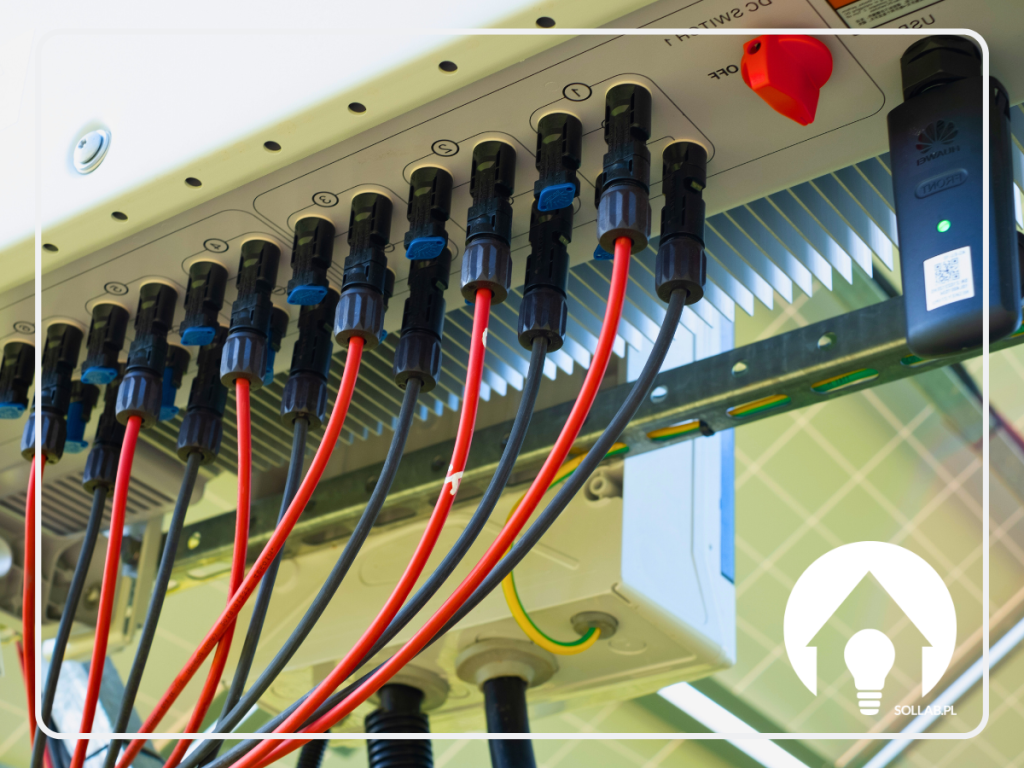What is the COP in heat pumps?
COP means thermal performance coefficient, which is a key parameter in assessing the efficiency of heat pumps. To understand, what is a COP and what does it mean, it is worth looking at its definition and applications in practice.
Definition of COP
COP (Coefficient of Performance) is the ratio between the amount of heat supplied by the heat pump and the amount of electricity consumed by the unit. In other words, COP shows how efficiently a heat pump converts electricity into heat. The higher the COP value, the more efficient the heat pump is.
What is COP 2 and what does it mean?
COP 2 is the capacity factor value, which means that the heat pump delivers twice as much heat as it consumes in terms of electricity. What COP 2 means in practice? For example, if a heat pump uses 1 kWh of electricity, it delivers 2 kWh of heat. A COP value of 2 is relatively low and may be indicative of the heat pump's low efficiency.
COP value in heat pumps
COP value of the heat pump depends on its type, manufacturing technology and operating conditions. Typical COP values for different heat pump types range from 2 to 5. COP value is measured under controlled laboratory conditions, making it possible to compare the performance of different heat pump models. However, it is worth bearing in mind that the COP value may vary depending on the heat pump's operating conditions in the actual environment.
How do I calculate the COP?
In order to calculate the COP for a heat pump, there are several steps to follow, taking into account all the necessary parameters. Below is a step-by-step guide, how to calculate the COP.
Steps to calculate the COP
- Collect data on the amount of heat supplied by the heat pump (Q) and the amount of electricity consumed by the unit (W).
- Divide the amount of heat (Q) by the amount of electricity (W) to get the COP value: COP = Q / W.
- The result represents a COP of The energy efficiency of a heat pump. The higher the COP value, the more efficient the unit is.
How do I check the COP of a heat pump?
To check the COP of the heat pump, you can use the technical data provided by the manufacturer or carry out your own measurements. For self-measurement, you will need suitable tools such as an electricity meter and a thermometer. Please note that the COP value may vary depending on the operating conditions of the heat pump in the actual environment.
What does the COP (coefficient of performance) mean?
Coefficient of performance COP reflects the energy efficiency of the heat pump, showing how efficiently the unit converts electricity into heat. The COP value is measured under controlled laboratory conditions, allowing the performance of different heat pump models to be compared. Coefficient of performance of heat pumps affects the overall efficiency of the system, as well as the operating costs of the unit. The higher the COP value, the lower the electricity bill.
Parameters affecting the COP value
The COP value can vary depending on a number of factors. In this section we discuss parameters affecting the COP value, such as supply temperature, manufacturing technology and the role of the inverter compressor.
Can the COP be increased?
Of course, there are various methods to increase the COP in the heat pump. In this section we discuss, how to increase the COP in a heat pump, outlining various strategies and techniques that can lead to a higher COP.
Ways to increase COP
Various approaches can be used to increase the COP value, such as:
- Supply temperature optimisation: Adjusting the flow temperature to the current atmospheric conditions can help to increase the COP value. However, it should be borne in mind that a supply temperature that is too low can affect indoor thermal comfort.
- Improving building insulation: Better thermal insulation of the building means that the heat pump has to use less energy to maintain the right temperature inside. As a result, the COP value can increase.
- Use of modern technology: Investing in modern heat pumps equipped with advanced technology, such as inverter compressors or intelligent controls, can lead to higher COP values.
- Regular servicing and maintenance: Taking care of the correct functioning of the heat pump, through regular inspection and maintenance, can also increase the COP value.
What is the difference between COP and SCOP?
Coefficients COP and SCOP are key parameters for assessing the performance of heat pumps. Although both refer to energy efficiency, they differ in terms of applications and calculation methods. In this chapter, we compare and contrast the cop and scop heat pumps, including their definitions, applications and methods of calculation.
Definition and meaning of SCOP
SCOP (Seasonal Coefficient of Performance) is a parameter that takes into account the variation in performance of a heat pump depending on the season. SCOP of the heat pump is calculated on the basis of the average COP value under various external conditions, such as ambient temperature and humidity. In practice, this means that what the SCOP factor means is the average output of a heat pump over an entire heating season.
The SCOP value is important because it allows the energy efficiency of the heat pump to be assessed over a longer period of time, taking into account changing weather conditions. Indicators SCOP and ηs (seasonal efficiency) are often used together to more accurately assess the performance of heat pumps in different seasons.
Comparison of COP and SCOP
Coefficients COP and SCOP have many features in common, but there are also important differences between them. Here is a comparison of the two parameters:
Coefficient Definition Application Method of calculation COP Energy efficiency coefficient of a heat pump at specific operating conditions. Evaluation of the performance of a heat pump at a specific point in time. The ratio of the heat output delivered by the heat pump to the electrical output consumed by the heat pump. SCOP Average COP value under different outdoor conditions throughout the heating season. Evaluation of the performance of the heat pump over a longer period of time, taking into account changing weather conditions. Average COP value under different outdoor conditions, calculated from measured data or simulations.
To summarise, COP refers to the capacity of the heat pump at a specific point in time, while the SCOP takes into account variations in performance depending on the season. Both ratios are important for assessing the energy efficiency of heat pumps, but SCOP gives a more comprehensive picture of performance over a longer period of time.
How to evaluate the performance of a heat pump?
Evaluation heat pump performance is crucial to choosing the right appliance to heat your home. In this chapter, we will provide a guide on how to evaluate the performance of the heat pump, taking into account various parameters and indicators such as energy efficiency, operating efficiency and a comparison of the performance of individual heat pumps.
Heat pump efficiency and electricity bills
Heat pump efficiency has a direct impact on the amount of electricity bills. The higher the energy efficiency of a heat pump, the lower the operating costs. It is therefore worth paying attention to the COP and SCOP coefficients, which provide information about this, how much electricity consumed by the heat pump in relation to the amount of heat supplied.
Example: A heat pump with a COP of 4.0 uses 1 kWh of electricity to produce 4 kWh of heat. For a heat pump with an SCOP of 3.5, the average electricity consumption over the entire heating season is 1 kWh for 3.5 kWh of heat.
Analysing scop vs bills for electricity, it is also worth considering the weather conditions and the individual heating needs of the house. By choosing a heat pump with the right capacity, you can significantly reduce your heating costs and enjoy heating comfort all year round.
Choosing the heat pump with the highest COP
Choosing heat pump, it is worth noting its COPwhich indicates the efficiency of the unit. The higher the COP, the better the performance of the heat pump. In this chapter, we will present a guide on how to choose a heat pump with the highest COP, taking into account various factors such as cost, performance and availability.
Summary
To summarise, COP is a key parameter to evaluate the performance of a heat pump. When choosing a heat pump, it is worth paying attention to the value of this coefficient to ensure that your home is heated efficiently and economically. Remember that the COP value can be increased by using appropriate technologies, such as inverter compressors or system controllers. It is also worth consulting an expert who can help you choose the right heat pump for your home, taking into account your individual needs and the operating conditions of the unit.
















